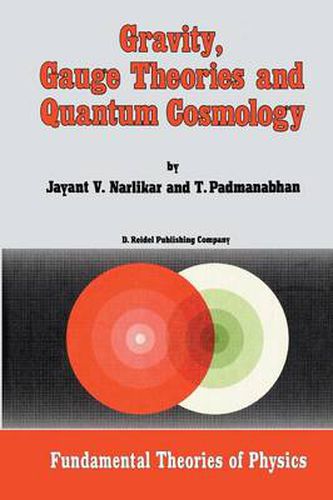Readings Newsletter
Become a Readings Member to make your shopping experience even easier.
Sign in or sign up for free!
You’re not far away from qualifying for FREE standard shipping within Australia
You’ve qualified for FREE standard shipping within Australia
The cart is loading…






This title is printed to order. This book may have been self-published. If so, we cannot guarantee the quality of the content. In the main most books will have gone through the editing process however some may not. We therefore suggest that you be aware of this before ordering this book. If in doubt check either the author or publisher’s details as we are unable to accept any returns unless they are faulty. Please contact us if you have any questions.
For several decades since its inception, Einstein’s general theory of relativity stood somewhat aloof from the rest of physics. Paradoxically, the attributes which normally boost a physical theory - namely, its perfection as a theoreti cal framework and the extraordinary intellectual achievement underlying i- prevented the general theory from being assimilated in the mainstream of physics. It was as if theoreticians hesitated to tamper with something that is manifestly so beautiful. Happily, two developments in the 1970s have narrowed the gap. In 1974 Stephen Hawking arrived at the remarkable result that black holes radiate after all. And in the second half of the decade, particle physicists discovered that the only scenario for applying their grand unified theories was offered by the very early phase in the history of the Big Bang universe. In both cases, it was necessary to discuss the ideas of quantum field theory in the background of curved spacetime that is basic to general relativity. This is, however, only half the total story. If gravity is to be brought into the general fold of theoretical physics we have to know how to quantize it. To date this has proved a formidable task although most physicists would agree that, as in the case of grand unified theories, quantum gravity will have applications to cosmology, in the very early stages of the Big Bang universe. In fact, the present picture of the Big Bang universe necessarily forces us to think of quantum cosmology.
$9.00 standard shipping within Australia
FREE standard shipping within Australia for orders over $100.00
Express & International shipping calculated at checkout
This title is printed to order. This book may have been self-published. If so, we cannot guarantee the quality of the content. In the main most books will have gone through the editing process however some may not. We therefore suggest that you be aware of this before ordering this book. If in doubt check either the author or publisher’s details as we are unable to accept any returns unless they are faulty. Please contact us if you have any questions.
For several decades since its inception, Einstein’s general theory of relativity stood somewhat aloof from the rest of physics. Paradoxically, the attributes which normally boost a physical theory - namely, its perfection as a theoreti cal framework and the extraordinary intellectual achievement underlying i- prevented the general theory from being assimilated in the mainstream of physics. It was as if theoreticians hesitated to tamper with something that is manifestly so beautiful. Happily, two developments in the 1970s have narrowed the gap. In 1974 Stephen Hawking arrived at the remarkable result that black holes radiate after all. And in the second half of the decade, particle physicists discovered that the only scenario for applying their grand unified theories was offered by the very early phase in the history of the Big Bang universe. In both cases, it was necessary to discuss the ideas of quantum field theory in the background of curved spacetime that is basic to general relativity. This is, however, only half the total story. If gravity is to be brought into the general fold of theoretical physics we have to know how to quantize it. To date this has proved a formidable task although most physicists would agree that, as in the case of grand unified theories, quantum gravity will have applications to cosmology, in the very early stages of the Big Bang universe. In fact, the present picture of the Big Bang universe necessarily forces us to think of quantum cosmology.